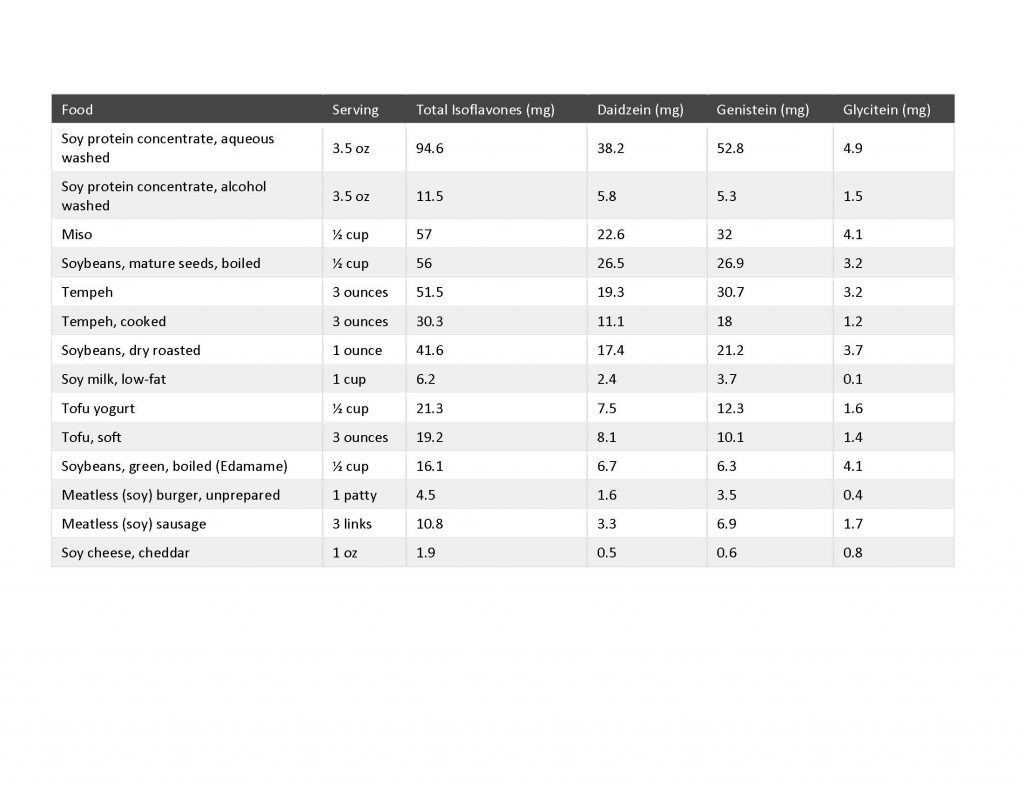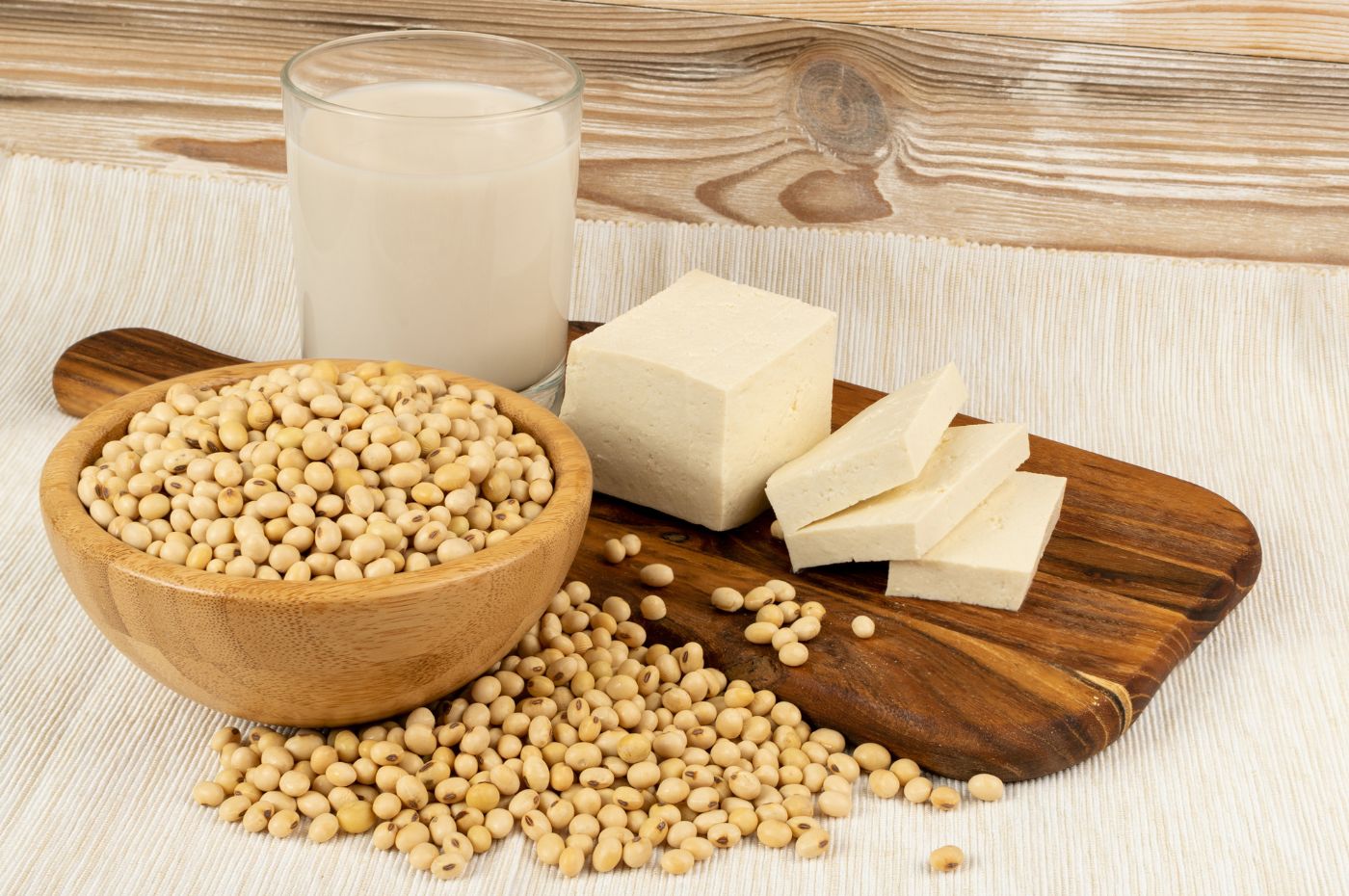Oh boy…the soy conversation. There’s no food that has sparked so much debate, hate or confusion.
Soy contains plant compounds, isoflavones (genistein and daidzein), that look structurally similar to estradiol. But they’re not estrogen. They’re called phytoestrogens and they’re also found in other foods and plants including flaxseeds and red clover.
How do phytoestrogens work?
Phytoestrogens are thought to modulate an estrogen effect. This implies when estrogen levels are high, soy will occupy estrogen receptors and block the more potent body estradiol from occupying the receptor. This is thought to result in a decrease in estrogen production through feedback to the brain.
When estrogen levels are low, it’s thought soy phytoestrogens will occupy estrogen receptors and may exert a weak, estrogen-like effect, to provide some relief from menopausal symptoms.
It’s also believed the estrogen modulating effect of soy is selective – that is, it will promote estrogen effect when occupying some body estrogen receptors, but not others.
Does soy help with hot flashes?
Studies have shown variable results of soy relieving hot flashes or night sweats. Some show no benefit, whereas others have shown that soy isoflavones (median 54 mg/day) can reduce hot flashes by up to 25% but may require 48 weeks to provide 80% of its benefit.
The probability of soy isoflavones helping with hot flashes may be reliant on a woman’s gut microbiome converting the soy isoflavones into a more active form. Women that possess these soy-converting gut flora may be more likely to notice benefit from eating it.
If soy ‘looks’ like estradiol, does it cause breast cancer?
There is very little substantial evidence in human trials to indicate that soy foods contribute to breast cancer. In fact, the opposite appears to be the case.
In one of the most recent reviews of soy foods and breast cancer in 2022, looking at 8 peer-reviewed studies with pooled data from women around the world spanning 2003-2021, the higher the soy intake, the lower the breast cancer incidence. In this study following women for 18 years, 75% of the breast cancer cases were in women who consumed little to no soy and only 25% of the breast cancer cases were in women who consumed a higher level of soy (greater than 15 grams isoflavones/day)
How much isoflavones are in common soy foods?
The most studied range of soy isoflavones for hot flashes is 15-54 mg/day. Here’s how it adds up: Other considerations with soy
Other considerations with soy
An estimated 85% of soy grown in the world is genetically modified (GMO) to be resistant to the glyphosate pesticide, RoundUp®. Both the genetically modified soy seed, and the pesticide RoundUp® are owned by Monsanto, a subsidiary of Bayer
Glyphosate pesticide was developed in the 1970’s and GMO soy in the 1990’s. Neither have a long history of use, and no generational studies. If you’re in perimenopause now, you’re the first generation to have grown up with both RoundUp® and GMO soy.
Glyphosate kills plants by blocking an enzyme that affects protein synthesis. Humans and animals don’t have this enzyme. Some microorganisms in the gut do. There’s evidence that glyphosate interferes with the gut microbiome in bees and is a contributing factor to their decline. Does it affect the gut microbiome of people and animals in the same way? There’s doesn’t appear to be a consensus. RoundUp® is one of the most widely used pesticides in farming in Canada. It’s not specific to soy.
Soy as an allergen
Soy is recognized as one of the top 8 priority food allergens by Health Canada and the FDA. According to Health Canada in 2020, 0.2-0.5% of Canadians have a probable allergy to soy (physician diagnosed) and 0.4-0.7% have a self-diagnosed allergy to soy.
My recommendations on soy
→If you enjoy soy, or would like to experiment with soy foods in your diet, and don’t suffer any allergic or digestive reactions when eating it, it can be part of a balanced, healthy diet.
→Soy is a complete protein and in amounts that supply 15-54 mg soy isoflavones/day, may have benefit with vasomotor symptoms of menopause with no increase in cancer risk and perhaps a protective effect. Be aware it’s not a quick fix for hot flashes and that you may need to enjoy it regularly for close to 1 year before noticing maximum benefit. There are more efficient and effective ways to manage hot flashes.
→Choose non-GMO or certified organic soy and as minimally processed as possible.
